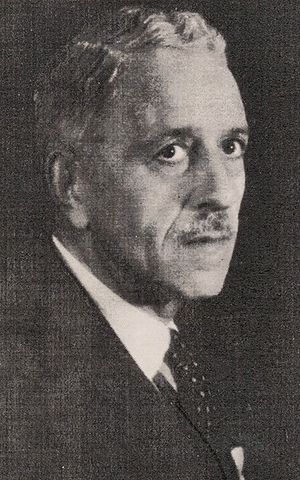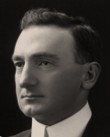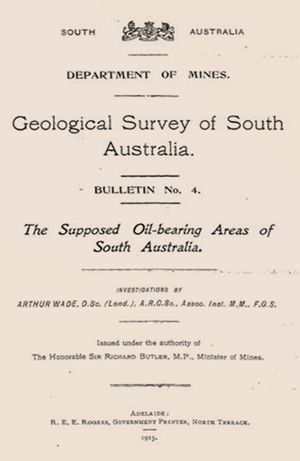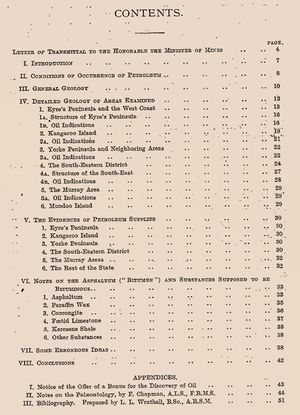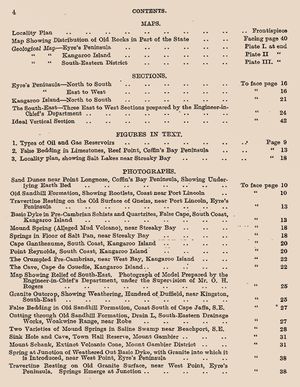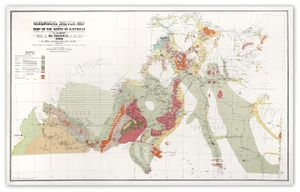Arthur Wade
- Birthdate
- 1878/11/12
- Birthplace
- Halifax, Yorkshire, England
- Death date
- 1951/04/08
Biography
The original version of this article was created by Francesco Gerali, 2020 Elizabeth & Emerson Pugh Scholar in Residence at the IEEE History Center
It is recommended this article be cited as:
F. Gerali (2020). Arthur Wade, Engineering and Technology History Wiki. [Online] Available: https://ethw.org/Arthur_Wade
Early life and education
Arthur Wade was born in Halifax, Yorkshire, England (UK) on November 12th, 1878, to a working-class family. He completed high school in London, and then enrolled at the Royal College of Science[1] - which shortly after merged into the Imperial College of Science, Technology and Medicine, and better known as Imperial College London,[2] - attending classes and teaching from 1903 to 1908 (Fig 1). In these years in London, Wade developed a large portfolio of scientific and professional achievements and was gaining a remarkable reputation in the earth sciences community. By 1904, he was a teaching associate at the RCS; and in the same year he is credited as being the recipient of the Murchison Medal[3] in Geology by the Geological Society of London,[4] which he was revoked shortly after. The known sources at the time of the composing this entry (2020) are contradictory and do not help to shed light on that event, but the official records of the GSL report George Alexander Louis Lebour[5] as the 1904 recipient. In 1906, still a college student, Wade was geology teacher at the Liverpool Municipal Technical School, and the same year was elected a fellow of the Geological Society of London.
Academia and petroleum geology practice
In 1907 Wade received a B.Sc. in Geology (first-class honors with minor in physics) while covering the position of demonstrator in geology at the Royal College of Science (1906-1910); later he got the same appointment at the Royal School of Mines[6] (1909-1910). Aside his from academic path, from 1907 to 1913 Wade developed a successful career as consulting geologist to various petroleum and coal mining companies. He first started in the Egyptian oilfields, and from 1910 he worked in Arabia, Cyprus, Palestine, Türkiye and the Dutch East Indies.
He earned a Doctor of Science (Geology) in 1911 from the University of London. The same autumn he pioneered the teaching of petroleum geology at the Imperial College Department of Geology, giving the first course of lectures on the subject ever delivered in an institution of university rank in the United Kingdom. Wade was a fervent advocate of petroleum geology as a discipline. He maintained that his fellow geologist colleagues paid little attention to petroleum occurrence and origin, and that too little was written about it. He was aware that finding petroleum was more dependent on geology than any other branch of mining, and that would be relevant to resolving issues in structure, conditions of sedimentation, petrology and paleontology.
Wade continued to work for petroleum companies and teaching in academia from 1911 to 1913: in 1912, he was promoted to the rank of general manager of the Eastern Petroleum Co. and Suez Oil Co.
New Guinea and Australia
Between 1912 and 1915 there was a dramatic surge of interest in petroleum exploration in Australia.
In September 1913, Wade was appointed advisor by the British government with regards to petroleum in Papua and commissioned to report directly to the Commonwealth Government of Australia about the extent of the petroleum production possibilities of that territory.[7] In early 1914, Wade recommended the Australian Government to improve petroleum search in the then Papua; a few years later the commercial production started successfully. During the following eight years of service for the Australian authorities, he engaged in surveys in Portuguese Timor, and was also consulting petroleum technologist to the Governments of Tasmania and South Australia. The latter was an important experience and turning point for the career of Arthur Wade.
In 1913, the report prepared by Government Geologist Leonard Keith Ward[8] (Fig. 2) portrayed negative prospects about petroleum and gas production in South Australia. He was severely criticised for his harsh and net assessment, and his word was cast into doubt by the press and speculators commenting on his relatively low experience with petroleum geology. The State Government then invited Arthur Wade to make further investigations, given his credentials and experience.
Wade, in five months between 1914 and 1915, surveyed about 10,000 square miles of South Australian territory, revised geological maps, produced new ones, and edited a comprehensive bibliography. Despite the lack of drilling, systematic mapping of outcrop and surface indicatates his assessment of the petroleum prospectivity was very accurate. Wade utilised existing reports and gained much on-the-spot advice from Ward, but his report also added a significant level of geological expertise to South Australia’s petroleum research, which represents the real added value to Wade's work, and was a landmark scientific turn for Australia. It also provided new data for geological maps and added a basinal[9] perspective that had been substantively lacking in petroleum exploration of the country; he also used biostratigraphy[10] for the first time for petroleum exploration in South Australia. (Fig. 3, 4, 5)
The most accurate surface hydrocarbon indicator available from early explorations proved to be the “coastal bitumen”, that is raw congealed bitumen which was washed up on South Australia’s ocean beaches. This has been considered by many as originating from offshore petroleum seepages. Wade suggested with respect to coastal bitumen in the south east of South Australia that: "The bulk of evidence is in favour of the asphaltum having a natural origin not necessarily far from these shores". He recognised that the occurrence of petroleum in the southeast lies within the bounds of possibility, given occurrence of outcropping lignitic sediments[11] of Mesozoic age in the adjacent State of Victoria. With respect to South Australia’s northeast (modern-day Cooper/Eromanga Basins)[12], which he was unable to visit, Wade concluded that "shales which may produce oil on distillation are also known to occur... But difficulties connected with climate, water and communication will probably cause a long period to elapse before the actual value of these interior deposits can be adequately tested and made known and will largely discount their economic value for many years"
Given the extant evidence and the ratification of the conclusions reached by his predecessors, he stated that no petroleum was ready to be produced in the short term, but he proposed where petroleum could be found in the future with further detailed surveys. After its publication, Wade’s report was highly criticised in the Adelaide press for essentially supporting the prevailing negative views and thus discouraged investments. Only few scholars, geologists, and mining professionals acknowledged the valuable geological overview and reasonable assessment that Wade had provided. Wade accepted the criticism philosophically stating that “Scientific criticism is to be expected and is desirable. I shall appreciate it”.
After he concluded his task with the South Australian government authorities, Wade continued his appointment as Director of petroleum fields in Papua New Guinea and carrying since 1919 additional projects in Timor. In these years spent travelling across Australia and surrounding islands, Wade wrote in his spare time a book of poetry entitled “Vagabond Verse”,[13] published in Melbourne in 1917 (also reprinted in 1947).
Between 1920 and 1924, he offered his services for Anglo-Persian and Franco-British interests in Algeria; for the American National Syndicate in Texas, Oklahoma, and Louisiana; and for the Standard Oil Company of California in the USA Midwest and in Madagascar. In 1923-25 Wade worked in northern Western Australia, mainly in the Kimberly District, and the north of the Northern Territory[14] on petroleum prospecting (Fig. 6). Wade in the immediate ensuing years prospected for petroleum in Europe (Albania, English Midlands, Greece, Ireland, Poland Portugal, and Spain) and South America (Colombia and Trinidad & Tobago).
In 1933, he received the third official invitation to explore for petroleum and gas in northern Australia (WA and NT), and together with Walter George Woolnough,[15] Wade pioneered the practice of aerial surveys[16] with cameras to cover the many large portions of terrains not yet explored. After he concluded this task, in 1936 he was elected Member of the Commonwealth Oil Advisory Committee, Australia and in 1938 he became Chair when his predecessor Woolnough resigned. When the Committee was dissolved in 1940, Wade was hired in the capacity of Geological Advisor by the Shell Co. of Australia, Division for Queensland Development and headquartered in Brisbane.
From 1943 to 1946 Wade served on the staff of the Chief Engineer, United States Army, S.W.P.A. and the Allied Intelligence.[17] After he concluded his service, in 1946 he retook his position with Shell in Queensland.
He died on April 8, 1951, at the age of 73 after a heart attack while he was surfing at Mermaid Beach, Queensland. He left a wife, a son and a daughter - after whom are named the volcanic Mounts Cedric and Gytha in the West Kimberley, Western Australia, where he worked in the 1920s. The mineral wadeite,[18] isolated for the first time by Arthur Wade while campaigning in the Canning Basin, is named after him.
When petroleum and natural gas were ultimately found in South Australia both in the Otway and Cooper Basins in the 1950s and 1960s by the company Santos[19] (South Australia Northern Territory Oil Search), little recognition was accorded to Arthur Wade, the first international petroleum geologist to work in the state - probably in the whole Australia - who 50 years earlier suggested the prospectivity of both basins and correctly predicted that it would be difficult to find and have a long lead time for discovery.
Since the 1960s, South Australia has produced most of Australia’s onshore natural gas and petroleum. Current reserves are in the late Palaeozoic/Mesozoic strata in the State’s far northeast around Moomba and, to a lesser extent, in the Mesozoic succession in the southeast around Penola.
Summary of the publications of Arthur Wade reported in his 1942 (circa) resume
Professional and scientific affiliations
- Fellow of the Geological Society of London
- Member of the Institution of Mining and Metallurgy
- Fellow of the Institute of Petroleum [20]
- Fellow of the Geographical Society of America
- Member of the American Association of Petroleum Geologists
- Member of the American Institute of Mining and Metallurgical Engineers
- Member of the National Research Council of Australia[21]
- Vice President for Geology at the Australian and New Zealand Association for the Advancement of Science. [22]
References
Oral Presentations
Barry J. Cooper. 2009. Arthur Wade and his 1915 Report on Petroleum Prospectivity in South Australia. Paper presented at the 34th INHIGEO Meeting, Calgary, AB, August 09-14.
Gerali, Francesco. 2015. Harsh Oil: Efforts and feats of endurance to find petroleum in Western Australia in early 20th century. Energy History Seminar organized by the Centre for Western Australia History and the Energy and Minerals Institute, WEBB lecture theatre, Geography and Geology Building, The University of Western Australia, Perth, WA, June 30.
Archives and Documents
Wade, Arthur (1942 circa). RESUME OF QUALIFICATIONS, ATTAINMENTS, AND EXPERIENCE OF ARTHUR WADE, D.Sc. 5 pages, typewritten with handwritten amendments. The Australian Academy of Science Basser Library and Fenner Archives, item number WadeA_MS-41-1-7.
Printed sources
Condit, David Dale. 1935. “Oil possibilities in the north west district of Western Australia”. Economic Geology 30: 860-878.
Craig, Barry. 1999. “The Papuan Photographs of Ernest Sterne Usher.” Pacific Arts, no. 19/20: 27-37.
Gerali, Francesco. 2015. “Without oil in the age of mechanization. On the inception of the modern oil industry in Australia.” Petroleum Exploration Society of Australia News 138: 60-63.
Gerali, Francesco, Jenny Gregory. “Harsh oil: finding petroleum in early twentieth century Western Australia”. In: Wolf Mayer, Renee Clary, Luz Fernanda Azuela, Teresa Salome Mota, & Slawomir Wołkowicz, (eds) History of Geoscience: Celebrating 50 Years of INHIGEO, 425-436. Geological Society, London, Special Publications, 442, 2016.
Glover, J. & Bevan, J. 2010. The Forgotten Explorers: Pioneer Geologists of Western Australia, 1826-1926. Hesperian Press, Perth.
Montgomery, J. N., Raggatt, H. G. 1951. “Memorial. Arthur Wade (1878-1951)”. AAPG Bulletin 35: 2643.
Passmore, V.L. and Towner, R.R. 1987. “A History of Geological Exploration in the Canning Basin, Western Australia.” Earth Sciences History 6, no 2: 159-177
Vallance, T. G. 1990. “Wade, Arthur (1878–1951)”, Australian Dictionary of Biography. National Centre of Biography, Australian National University.
Wade, Arthur. 1913. “The natural history of petroleum”. Proceedings of the Geologists Association XXIV, no.1, pp. 1-13.
Wade, Arthur. 1917. “Supposed Oil-Bearing Areas of South Australia”. Bulletin of the Geological Survey of Western Australia, no. 4: 4-51.
Wade, Arthur. 1924. Petroleum Prospects. Kimberley District of Western Australia and Northern Territory. Report by Arthur Wade ... Together with Maps, Plans, and Photographs in Illustration of the Report. Australia: Printed and Published for the Government of the Commonwealth of Australia by H. J. Green, Government Printer for the State of Victoria, 1924.
Wade, Arthur. 1926. “Search for Oil in Australia”. Journal of the Institution of Petroleum Technologists, 12, No. 55, pp. 145-164.
Wade, Arthur. 1927. “The Search for Oil in New Guinea”. AAPG Bulletin 11, no. 2: 157-176.
Ward, Leonard Keith. 1917. Report on the prospects of obtaining supplies of petroleum by boring in the vicinity of Robe and elsewhere in the south-eastern portion of South Australia. Government Printer, Adelaide, 1917.
Further Reading
- ↑ https://archiveshub.jisc.ac.uk/search/archives/ca3a8cb6-18a5-3a5b-bb48-39804f128df4
- ↑ https://www.imperial.ac.uk/about/history/
- ↑ https://www.geolsoc.org.uk/About/awards-grants-and-bursaries/society-awards/murchison-medal
- ↑ https://www.geolsoc.org.uk/archives
- ↑ https://search.amphilsoc.org/collections/view?docId=ead/Mss.B.L491-ead.xml
- ↑ https://archiveshub.jisc.ac.uk/search/archives/fd829e65-9082-3ca6-b171-6507772d7c56
- ↑ https://nla.gov.au/nla.obj-2820864595/view
- ↑ https://library.flinders.edu.au/about/collections/special/l-keith-ward-collection
- ↑ https://link.springer.com/chapter/10.1007/978-3-642-20608-5_7
- ↑ https://www.ga.gov.au/scientific-topics/disciplines/biostratigraphy
- ↑ https://energyeducation.ca/encyclopedia/Lignite
- ↑ https://www.energymining.sa.gov.au/petroleum/prospectivity/eromanga_basin
- ↑ http://digital.slv.vic.gov.au/view/action/singleViewer.do?dvs=1599463718304~621&locale=en_US&metadata_object_ratio=10&show_metadata=true&VIEWER_URL=/view/action/singleViewer.do?&preferred_usage_type=VIEW_MAIN&DELIVERY_RULE_ID=10&frameId=1&usePid1=true&usePid2=true
- ↑ https://trove.nla.gov.au/work/12779552?keyword=Arthur%20Wade
- ↑ http://adb.anu.edu.au/biography/woolnough-walter-george-9189
- ↑ https://trove.nla.gov.au/work/200349945?keyword=Arthur%20Wade
- ↑ https://www.army.mil/article/174480/allied_intelligence_bureau_plays_role_in_world_war_ii
- ↑ https://www.mindat.org/min-4227.html
- ↑ https://www.santos.com/about-us/our-story/
- ↑ https://www.energyinst.org/about
- ↑ https://www.arc.gov.au/about-arc
- ↑ https://collections.museumsvictoria.com.au/articles/1846
